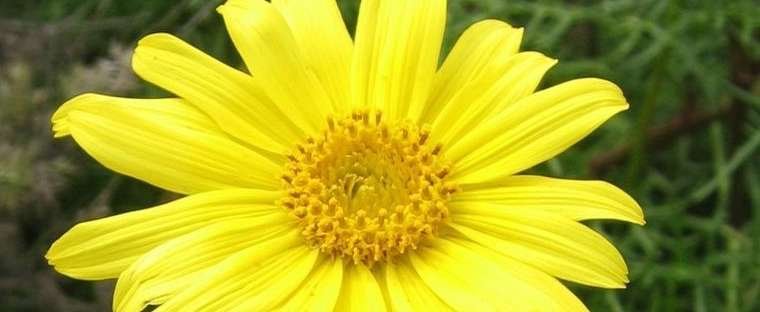
One of the most stunning and secretive plants of Cabrillo National Monument is putting on quite a show presently. The beautiful Sea Dahlia (Leptosyne maritima) is currently blooming and opening up new buds daily. However, this won’t last long. The Sea Dahlia is one of the early flowering plants in the park. Sea Dahlia are commonly found on ocean bluffs and prefers sandy soils. This rare plant is part of the Asteraceae (Sunflower) Family and is endangered due to habitat loss in Southern California.
The Sea Dahlia has a fleshy taproot that springs to life during the rainy season. Their foliage is lobed and mostly linear in shape, with long peduncles (15-30cm) that support the flower heads. The Dahlia’s radiate heads consist of inner disk flowers and peripheral ray flowers. A healthy plant can contain 12-15 flowers, with new buds emerging from the plant as older pollinated flowers create seed.

The Sea Dahlia has a cousin that inhabits the Channel Islands. The Leptosyne gigantea or Giant Coreopsis has a woody trunk 1-2 meters tall that supports the foliage and flowers. The foliage and flowers are very similar the Sea Dahlia and just as stunning. In the dry season, only the stumps of the plants are visible.
As the rainy season comes to a close, the summer deciduous Sea Dahlia will drop all its foliage and disappear with the oncoming dry season. There will be no trace of this beautiful flower during the heat of the summer months.
So, the time is right to get a glimpse of one of nature’s rare beauties. Don’t dilly-dally and miss one of Cabrillo’s rare sites; the Sea Dahlia!
Sources: http://calscape.org/Leptosyne-maritima-(Sea-Dahlia)?srchcr=sc58110a21884a3
